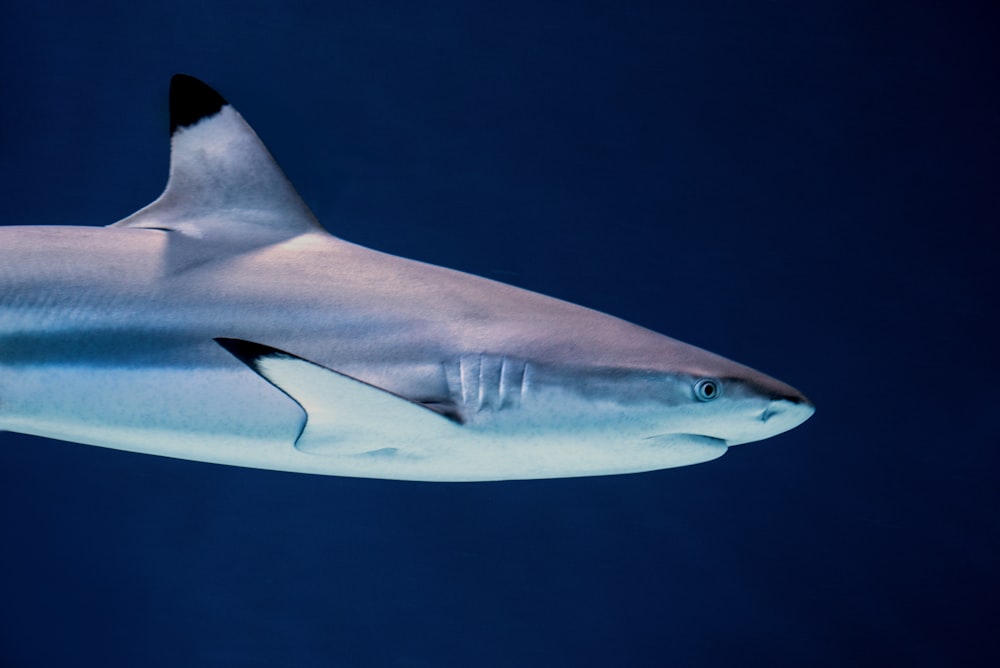Have you ever wondered why sharks float effortlessly in the water despite their large size and weight? It’s a fascinating aspect of these magnificent creatures that often goes unnoticed.
In this article, we’ll delve into the science behind why sharks have mastered the art of buoyancy in the ocean.
Understanding the buoyancy of sharks is not only intriguing but also essential for gaining insights into their behavior and survival strategies.
From their unique body composition to specialized adaptations, sharks have evolved remarkable mechanisms that allow them to stay afloat with minimal effort.
Join us as we explore the secrets behind why these apex predators effortlessly glide through the depths of the sea.
Understanding Shark Buoyancy
The Role of Shark Anatomy
Shark anatomy plays a crucial role in their ability to float effortlessly in water.
The secret lies in their unique body composition, specifically their cartilage skeletons.
Unlike bony fish with heavy skeletons, sharks have lightweight cartilage skeletons, which aid in maintaining their buoyancy.
This adaptive feature allows them to control their position in the water column with minimal effort.
The liver of a shark also contributes significantly to their buoyancy. Sharks possess large, oil-rich livers that contain low-density oils.
These oils are lighter than water, providing sharks with additional lift and helping them stay afloat.
Shark Floating Behavior Explained
Differences Between Shark Species
When examining shark floating behavior, it is crucial to consider the differences between various shark species.
Different species have evolved distinct adaptations to thrive in their respective habitats.
Some sharks, like the whale shark, rely on their large size and low-density cartilage to stay afloat effortlessly.
In contrast, more streamlined species such as the great white shark use their powerful swimming abilities to control their buoyancy in the water.
Understanding these variations in floating mechanisms can provide valuable insights into the behavior and ecology of different shark species.
Hunting and Survival Strategies
Shark floating behavior is intertwined with their hunting and survival strategies in the marine environment.
For instance, sharks that can maintain a specific depth in the water column while remaining buoyant have a tactical advantage when hunting prey.
Adjusting their buoyancy through subtle movements and specialized anatomical features, sharks can approach their prey stealthily and launch precise attacks.
This ability to control their position in the water allows sharks to conserve energy during long periods of hunting and enhances their overall efficiency as apex predators in the oceanic food chain.
Myths and Facts About Sharks Floating
Debunking Common Misconceptions
There are several myths surrounding the ability of sharks to float effortlessly in the water.
Let’s address some of these misconceptions to gain a better understanding of the truth behind sharks’ buoyancy control:
-
- Myth: Sharks float because they have airbladders like other fish.
-
- Fact: Unlike most bony fish that use swim bladders to control buoyancy, sharks lack swim bladders. Instead, their buoyancy is achieved through a combination of factors such as their lightweight cartilage skeletons and the presence of large, oil-rich livers that help them maintain neutral buoyancy in the water.
-
- Myth: All sharks float in the same way.
-
- Fact: While all sharks have evolved mechanisms to control their buoyancy, the specifics of how they float can vary between species. Factors such as habitat, size, and feeding behavior influence the floating abilities of different shark species.
-
- Myth: Sharks need to keep swimming to avoid sinking.
-
- Fact: Contrary to popular belief, not all sharks need to keep swimming to stay afloat. Some sharks, like the nurse shark, can actively pump water over their gills to breathe while at rest on the seabed, showcasing their efficient buoyancy control even when stationary.
Human Interactions and Observations
Shark Encounters and Marine Research Insights
When examining shark encounters in the wild, our observations reveal fascinating insights into these creatures’ buoyancy control mechanisms.
Despite common misconceptions portraying sharks as constantly swimming to stay afloat, our interactions with various species have shown that they can rest on the seabed or hover in the water column effortlessly.
This behavior challenges the traditional belief that sharks must be in constant motion to prevent sinking, showcasing the diversity in their floating abilities based on species characteristics and environmental adaptations.
Through extensive marine research, our findings emphasize the importance of understanding the nuanced ways different shark species manage buoyancy.
Observations of various species, such as the whale shark and great white shark, have provided valuable data on how factors like body composition, size, and habitat influence their floating capabilities.
Studying these interactions not only sheds light on the intricate balance between shark physiology and buoyancy but also aids in conservation efforts by unraveling the mysteries of these apex predators’ behavior in their natural habitats.
Conservation Implications
Understanding how sharks float provides valuable insights into their behavior and survival strategies.
By debunking myths and highlighting the diversity in floating mechanisms among shark species, we can appreciate the complexity of these apex predators.
Observations in the wild have shown us the effortless ways in which sharks manage buoyancy, showcasing their adaptability to different environments.
This knowledge is crucial for marine conservation efforts, as it helps unravel the mysteries surrounding shark physiology and behavior.
Frequently Asked Questions About Sharks
How do sharks float in water?
Sharks achieve buoyancy through their lightweight cartilage skeletons and oil-rich livers, which help them control their position in the water column effortlessly.
Do all sharks float the same way?
No, different shark species have variations in their floating mechanisms based on habitat, size, and feeding behavior, showcasing their diverse adaptations for buoyancy control.
Do sharks need to keep swimming to avoid sinking?
Contrary to popular belief, sharks can rest on the seabed or hover in the water column without continuous swimming, thanks to their unique buoyancy control mechanisms.
